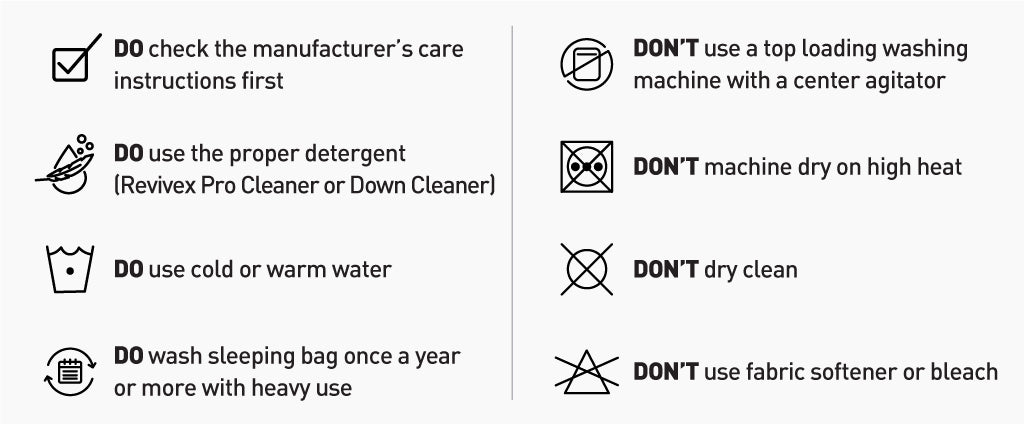To wash a sleeping bag, use a front-loading washing machine with a gentle cycle. Use mild detergent and cold water.
Properly washing a sleeping bag ensures its longevity and maintains its warmth. Over time, dirt, oils, and sweat can accumulate, affecting the bag’s insulation and comfort. Regular cleaning not only keeps it fresh but also enhances its performance on your outdoor adventures.
Always check the manufacturer’s care label for specific instructions. Using a mild detergent prevents damage to the fabric and insulation. Air drying is recommended to avoid heat damage from dryers. By following these steps, you can keep your sleeping bag in top condition, ready for your next camping trip.

Contents
Preparation Steps
Gather necessary supplies, such as mild detergent, a large bathtub, and a soft-bristle brush. Check the sleeping bag’s care label for specific washing instructions.
Check Care Label
Always read the care label on your sleeping bag. The label tells you the best way to wash it. Some bags need special care. Follow the instructions carefully to avoid damage.
Gather Supplies
You will need mild detergent, a bathtub or large sink, and a soft brush. Gather these supplies before starting. Make sure the detergent is suitable for delicate fabrics. Keep everything within reach to make washing easier.

Spot Cleaning
First, look closely at your sleeping bag. Find all the stains and dirty spots. Make sure not to miss any. Use a flashlight if needed. Mark these spots with small pieces of tape. This helps you remember where to clean.
Get a mild soap or special cleaner for sleeping bags. Mix it with water. Use a soft brush or sponge. Dip it into the soapy water. Gently rub the stained areas. Do not scrub too hard. This might damage the fabric. Rinse the spot with a little water. Pat dry with a clean towel.
Machine Washing
Use a mild detergent. Avoid bleach and fabric softeners. They can damage the sleeping bag. A detergent made for delicate fabrics is best. A specialized cleaner for sleeping bags is even better. Ensure the detergent is fully dissolved in water.
Set the washing machine to a gentle cycle. Use cold water to prevent shrinking. Make sure the sleeping bag is evenly distributed. Avoid using a top-loading machine with an agitator. A front-loading machine is safer. A large capacity machine works best.

Drying Techniques
Find a shaded area for drying. Hang the sleeping bag on a clothesline. Make sure it’s fully spread out. This helps to dry evenly. Turn it occasionally to speed up drying. Don’t place it under direct sunlight. Sunlight can damage the fabric. Air drying is gentle and safe.
Set the dryer to the lowest heat setting. Place a few clean tennis balls inside. They help to fluff the sleeping bag. Check the bag periodically. Make sure it doesn’t overheat. Remove the bag when it’s almost dry. Finish drying it by air. This prevents damage from excess heat.
Frequently Asked Questions
How Often Should You Wash A Sleeping Bag?
You should wash your sleeping bag after every 10-15 uses. If it gets dirty sooner, wash it then. Regular washing maintains cleanliness and ensures longevity.
Can You Machine Wash A Sleeping Bag?
Yes, most sleeping bags can be machine washed. Use a front-loading machine on a gentle cycle with mild detergent. Always check the care label first.
What Detergent Is Best For Washing Sleeping Bags?
Use a mild, non-detergent soap or a specialized sleeping bag cleaner. Avoid harsh detergents and fabric softeners as they can damage the insulation.
How Do You Dry A Sleeping Bag After Washing?
Air dry your sleeping bag or use a large dryer on low heat. Add clean tennis balls to prevent clumping. Ensure it’s completely dry before storing.
Conclusion
Properly washing your sleeping bag ensures it lasts longer and remains comfortable. Follow the steps outlined for best results. Regular care helps maintain insulation and cleanliness. Always check the manufacturer’s instructions before washing. With the right approach, your sleeping bag will be ready for many adventures.
